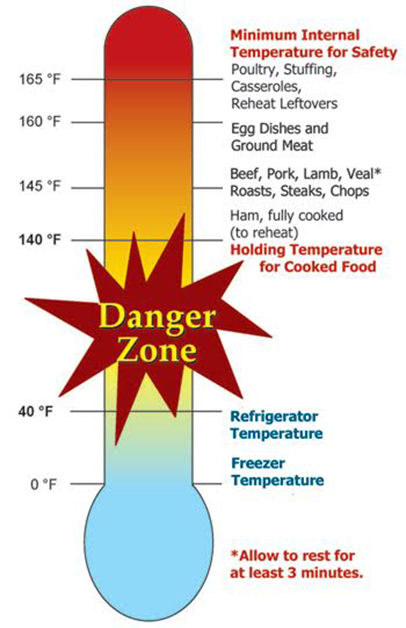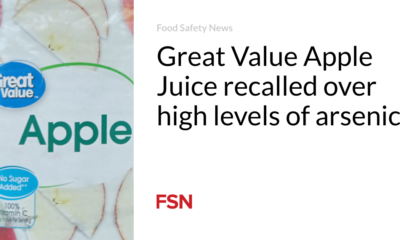Food
Food safety on Labor Day in high temperatures

Food safety is becoming of paramount importance as Americans prepare to celebrate Labor Day with outdoor barbecues and picnics, especially as forecasts predict high temperatures across much of the United States. The heat adds an additional challenge to food handling, increasing the risk of foodborne illness if precautions are not followed.
Important practices to prevent the risks of food poisoning include properly refrigerating and packaging food, maintaining food temperature, and washing hands thoroughly.
Cooling and packaging food
One of the most common mistakes made at picnics and outdoor gatherings is improperly refrigerating freshly cooked food. Food should be cooled quickly and stored in shallow containers so that it can be cooled or transported immediately. This prevents bacterial growth that can occur between 40 degrees F and 140 degrees F, known as the “danger zone.”
Storing cold and warm dishes
To combat potential food safety issues in the heat, it is critical to keep cold foods cold and hot foods hot. Ice packs or frozen gel packs should be used in coolers for cold foods, while insulated containers are recommended for steaming hot foods until served.
Installing and handling coolers
Where you place your cooler can significantly impact food safety. The USDA recommends keeping coolers in the passenger compartment of a car rather than the trunk during transportation, and placing them in the shade at picnic areas, underscoring the need to keep the cooler closed until food is needed.
Hand washing and surface cleaning
Thorough hand washing is essential when preparing and serving food, especially when handling raw meat or poultry. If running water is not available, hand sanitizers and disposable towels are the best options, but not as effective.
Good grilling techniques — PRO Grilling
Grilling is a favorite Labor Day activity, but requires careful attention to ensure food safety. Using a food thermometer to check the internal temperature of meat is critical. The USDA provides clear guidelines on the minimum safe temperatures for different types of meat so that they are cooked sufficiently to kill harmful bacteria.
You can reduce and prevent foodborne illness from cooking meat or poultry on the grill by following these three tips from the USDA.
- P — Insert the thermometer
When you think your food is done, check the internal temperature by inserting a thermometer into the thickest part of the meat, usually about 1.5 to 2 inches deep. If you are preparing a thinner piece of meat, such as hamburgers, insert the thermometer from the side. Make sure the probe reaches the center of the meat.
- R — Read the temperature in time
Wait approximately 10 to 20 seconds for an accurate temperature reading. Use the following guidelines for a safe internal temperature for your meat and poultry.
- Beef, pork, lamb and veal (steaks, roasts, chops) and fish: 145 degrees F (63 degrees C) with a 3-minute rest.
- Ground meat: 160 degrees F (71 degrees C)
- Whole poultry, whole and cut poultry pieces and ground poultry: 74 degrees C (165 degrees F)
- O — From the grill
Once the meat and poultry have reached the safe minimum internal temperature, remove the food from the grill and place it on a clean platter. Do not place cooked food on the same tray that held raw meat or poultry. Also, don’t forget to clean your food thermometer probe with warm soapy water or disposable sanitizing wipes between uses.
Since September is also Food Safety Education Month, this is a good time to remind everyone of these crucial practices so that the holiday is not only enjoyable, but also safe from food-related illness.
(To sign up for a free subscription to Food Safety News, click here.)













